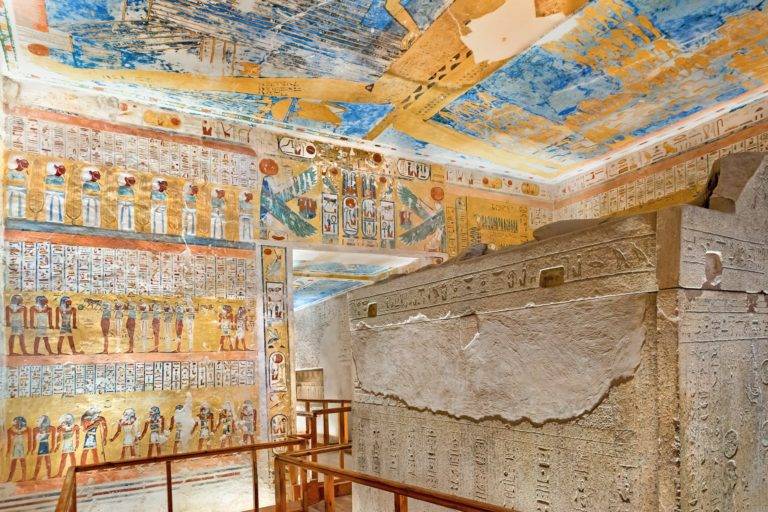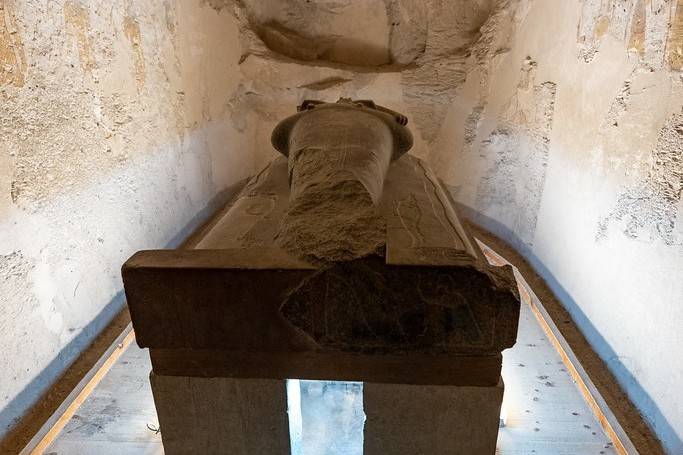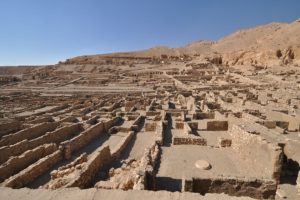Avenue of Sphinxes
sacred road
Imagine standing at the gates of Karnak Temple as the morning sun lights up the sandstone. In front of you is a grand road lined with sphinxes—silent watchers that have been here for over 3,000 years. This is the Avenue of Sphinxes, also called El-Kebbash Road. It is a 2.7-kilometer ceremonial road that connects Karnak Temple to Luxor Temple. For many years, it was buried under sand and buildings, but now it has been restored. Travelers can now walk where pharaohs, priests, and citizens once celebrated Egypt’s most important religious festivals.
The Avenue of Sphinxes is not just an archaeological site. It connects the past with the present, bringing together history, spirituality, and architecture. Whether you love history, enjoy cultural experiences, or are just curious about Egypt’s treasures, this remarkable road offers one of the most engaging experiences in Luxor.

What is the Avenue of Sphinxes?
The Avenue of Sphinxes is an ancient road that linked two important temples in Thebes, now called Luxor. These temples are Karnak Temple, dedicated to the god Amun-Ra, and Luxor Temple, a place for kingship and renewal.
The avenue is 2.7 kilometers long and 76 meters wide. Originally, it had over 1,350 sphinx statues along its sides.
There are two types of sphinxes:
– Human-headed sphinxes, which represent royal power and divine protection.
– Ram-headed sphinxes, which are linked to Amun-Ra and symbolize strength and fertility.
This avenue was more than just a road. It was a sacred place for rituals, festivals, and royal events. For the ancient Egyptians, walking on this path was a spiritual journey between the earthly world and the divine.
Luxor Tours & Activities
Looking to save some costs on your travel? Why not join a shared group tour to explore Luxor, Egypt? Here are some activities you might be interested in:
Historical Origins and Construction
The Avenue of Sphinxes took many years to build, involving several pharaohs. It shows the ambition of these rulers to make Thebes the religious center of Egypt.
Amenhotep III, who ruled in the 14th century BC, started the project. He ordered the creation of the first rows of human-headed sphinxes. His reign was known for large building projects, and he aimed to connect Karnak and Luxor through this avenue.
Ramses II and Ramses III, who ruled in the 13th and 12th centuries BC, added to the road and made it more impressive.
Nectanebo I, from the 4th century BC (30th Dynasty), finished the avenue. He commissioned many ram-headed sphinxes to honor the god Amun-Ra along the road.
Over time, the avenue became the center for ceremonies in Thebes, used for festivals and royal events. Later rulers like Hatshepsut and Cleopatra VII also contributed to the temples at both ends of the avenue. This helped ensure that it remained important to Egypt’s religious life for many years.

Symbolism and Religious Role
The Avenue of Sphinxes has a deep symbolic meaning. Each sphinx statue serves as a guardian and protector of the sacred path. The lion bodies with human or ram heads show strength, wisdom, and a divine presence.
This avenue played a vital role during the Opet Festival, one of ancient Egypt’s biggest celebrations. The festival took place each year during the Nile’s flood season. It symbolized fertility, renewal, and the pharaoh’s right to rule.
During the festival:
– The sacred boats of Amun-Ra, Mut, and Khonsu traveled from Karnak to Luxor Temple.
– Priests, musicians, dancers, and citizens took part in a grand procession filled with music, incense, and offerings.
– The pharaoh performed rituals to renew his divine power and strengthen his connection with the gods.
For the people of Thebes, the avenue was more than just a road; it was a link between heaven and earth, a place where divine energy flowed into the city.

Rediscovery and Restoration
For many centuries, the Avenue of Sphinxes was buried under sand, dirt, and modern buildings. Houses, shops, and streets covered its remains, leaving only small parts visible.
From the 1940s to the 1960s, archaeologists found sections of the road near Luxor Temple. They discovered rows of sphinxes still in place.
Between the 1980s and 2000s, large projects aimed to map the entire route. This work required moving modern buildings and infrastructure.
In 2021, after years of digging and restoring, the Egyptian government opened the restored avenue in a grand ceremony. The event included music, lights, and reenactments of the Opet Festival. It showcased the avenue as a symbol of Egypt’s rich cultural heritage.
Today, visitors can walk along this important road, experiencing a monument that had been forgotten for nearly 2,000 years.

Visiting the Avenue of Sphinxes Today
Visiting the Avenue of Sphinxes is a must-do when in Luxor. Here’s what you should know:
Entry Points
– Karnak Temple: Start at the northern end where the avenue begins.
– Luxor Temple: Enter from the southern end, where the avenue opens up to the temple forecourt.
Best Times to Visit
– Early morning: Cool weather and fewer people.
– Late afternoon: Beautiful light for photos.
– Evening: Some areas are lit up, creating a magical feel.
Practical Travel Tips
– Tickets: Usually included with entry to Karnak or Luxor Temple, but check the latest ticket rules.
– Duration: Walking the entire 2.7 kilometers takes about an hour, but shorter walks are also enjoyable.
– Comfort: Bring water, sunscreen, and wear comfy shoes since the path is long and open.
– Photography: Use wide-angle shots for the big view and close-ups to show the details of each sphinx.

Why the Avenue of Sphinxes Matters
The reopening of the Avenue of Sphinxes is not just an archaeological achievement; it is a cultural milestone.
This avenue shows the greatness of ancient Thebes, which was once Egypt’s religious capital. Its restoration has boosted tourism in Luxor, strengthening its reputation as the “world’s greatest open-air museum.”
The project also demonstrates Egypt’s commitment to protecting its heritage for future generations.
For travelers, the avenue is more than just a monument; it is a living reminder of Egypt’s lasting legacy.

Walking in the Footsteps of Pharaohs
The Avenue of Sphinxes is more than just an archaeological site; it’s a trip back in time. Walking along this sacred road lets you follow in the steps of pharaohs, priests, and citizens who once honored the god Amun-Ra. This place combines history, religion, and architecture, giving travelers a unique chance to see the greatness of ancient Egypt in its original setting.
If you’re visiting Luxor, the Avenue of Sphinxes should be a must-see. It reminds us that Egypt’s history is alive, not just found in museums, but in the stones beneath our feet.
Got a Question?
F.A.Qs
It stretches approximately 2.7 kilometers (1.7 miles) between Karnak and Luxor Temples.
Construction began under Amenhotep III and was completed centuries later by Nectanebo I.
Originally, more than 1,350 statues lined the road, though many are damaged or missing today.
Yes, the restored avenue is open to visitors, though some sections are better preserved than others.
It was primarily used during the Opet Festival, when statues of the gods were carried in procession between Karnak and Luxor.
Did you know that
By purchasing through our links, you support us at no additional cost.
Thank you for your support. ♥️






